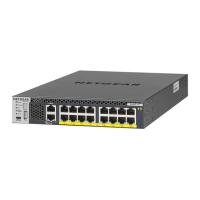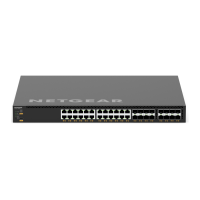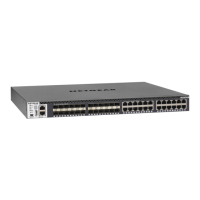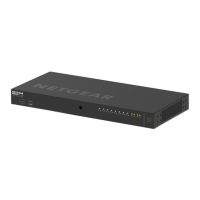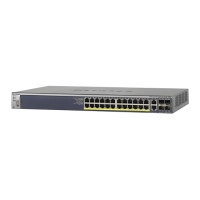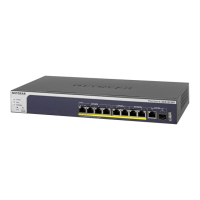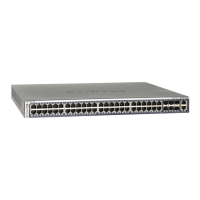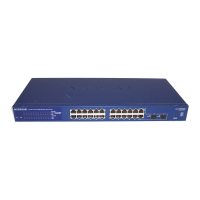Configure System Information
55
M4300 Series and M4300-96X Fully Managed Switches User Manual
9. The DHCPv6 Client DUID field displays the client identifier used by the DHCPv6 client (if
enabled) when sending messages to the DHCPv6 server.
10. To configure the IPv6 gateway, select the Change IPv6 Gateway check box.
The IPv6 gateway is the default gateway for the IPv6 service port interface.
1
1. Use the IPv6 Gateway field to specify the default gateway for the IPv6 service port
interface.
The Add/Delete IPv6
Address
table lists the manually configured static IPv6 addresses
on the service port interface.
12. Specify the following:
a. In the IPv6 Address field, specify the IPv6 address to add or remove from the service
port interface.
b. Select the EUI Flag option to enable the Extended Universal Identifier (EUI) flag for
IPv6 address, or clear the option to omit the flag.
13. Click the Add button.
The IPv6 address is added to the service port interface.
14. Click the Apply button.
Your settings are saved.
Management VLAN Overview
For you to manage the device by using the web-based configuration utility, the device
management IP address must be defined and known. A management VLAN interface is
created by default and it gets an IP address if a DHCP server is present. If it fails to get an IP
address, a fallback address 169.254.100.100/255.255.0.0 is assigned to it. Management
VLAN is used as the default source interface for syslog, message log, and SNMP client, and
so on The network interface is disabled by default.
The management VLAN is the logical interface used for in-band connectivity with the switch
through any of the switch’
s front panel ports.
The configuration parameters associated with
the switch’s management VLAN do not affect the configuration of the front panel ports
through which traffic is switched or routed.
To access the switch over a network, you must first configure it with IP information (IP
address, subnet mask). Y
ou can configure the IP information using any of the following:
• DHCP
• Terminal interface through the EIA-232 port
After you establish in-band connectivity
, you can change the IP information using any of the
following:
• Terminal interface through the EIA-232 port
• Terminal interface through Telnet
• SNMP-based management
• W
eb-based management
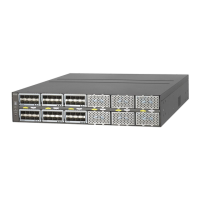
